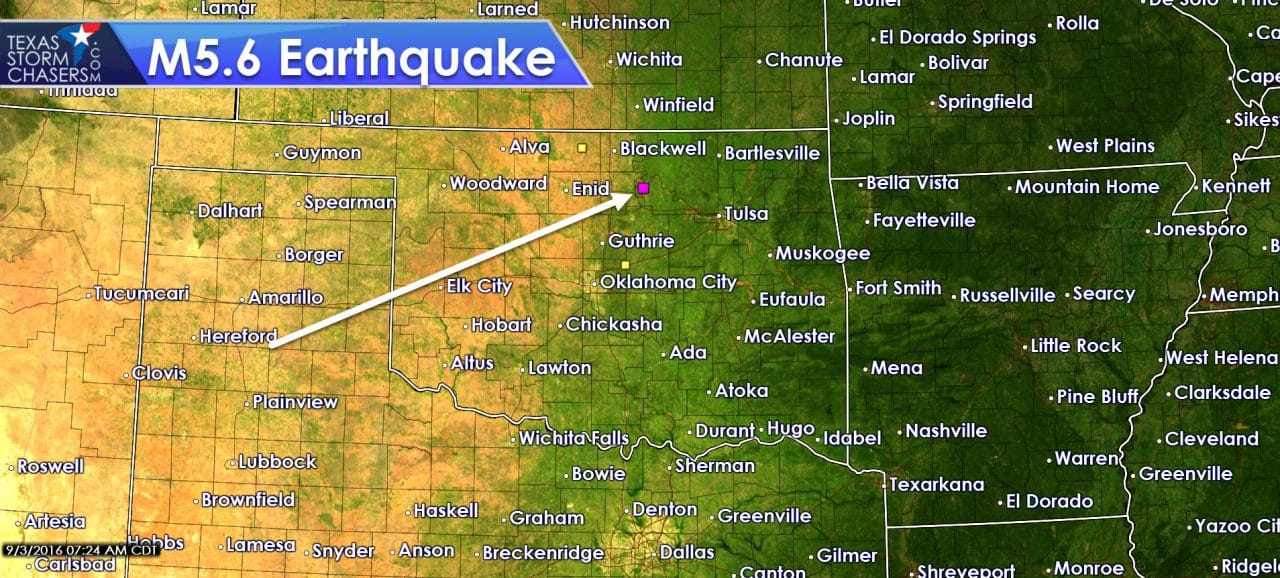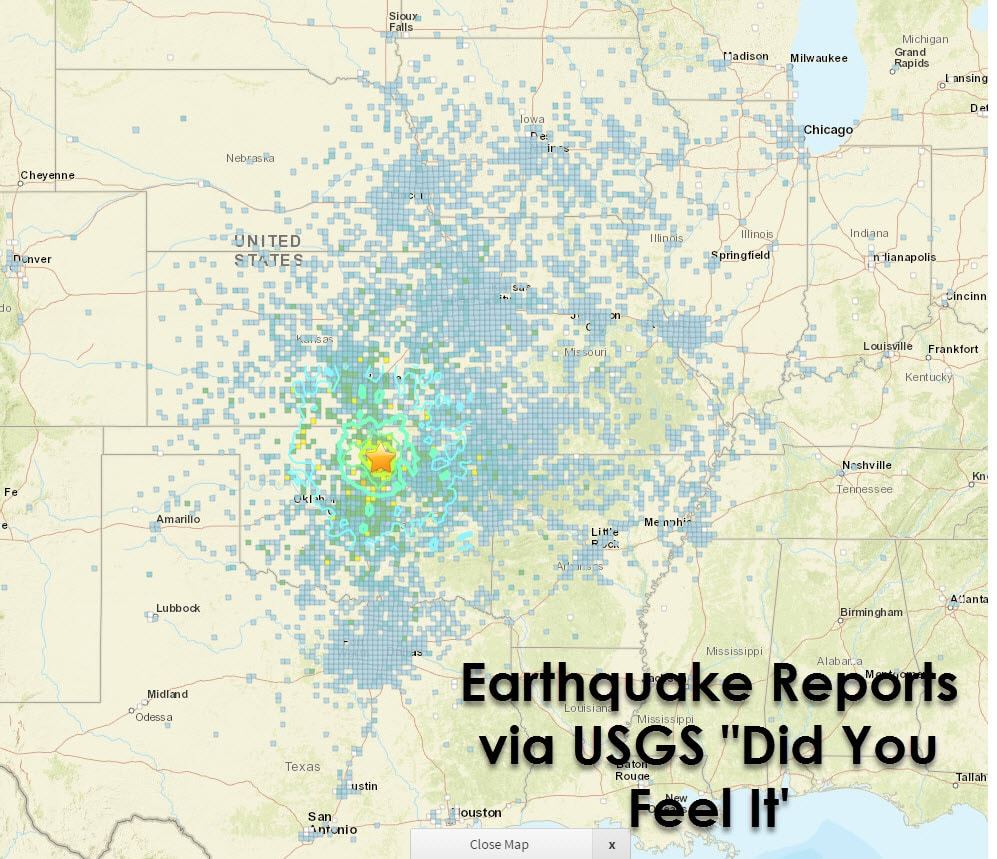One of the strongest earthquakes recorded for the Southern US rattled several states in the Central/Southern US this morning. The USGS has rated it a Magnitude 5.6 with a epicenter north Stillwater, OK. Reports have come in from Nebraska, Kansas, Arkansas, Missouri, Tennessee, Texas, and Oklahoma. It was particularly strong in my neck of the woods in Norman, Oklahoma. No reports of damage have been received but plenty of folks have had their nerves wrecked for the day. Welcome to California! If only we could have their cooler weather. We’ll update this post with new information and graphics as they become available.
This writeup is from the United States Geological Service (USGS) on the September 3, 2016 Oklahoma Earthquake. The September 3, 2016 M 5.6 Oklahoma earthquake occurred as the result of shallow strike-slip faulting about 15 km northwest of the town of Pawnee. The earthquake occurred within the interior of the North America plate, far from any plate boundaries. The preliminary focal mechanism solution for the earthquake indicates rupture occurred on either a left-lateral fault striking east-southeast, or on a right lateral fault striking north-northeast. The mainshock location aligns with a major regional SW-NE trending fault. In general, it is very difficult to correlate earthquakes to specific faults in the region and identification of the fault responsible for this event will require further study and fieldwork.
Prior to the September 3, 2016 earthquake, the surrounding region of Oklahoma and Kansas has hosted close to 80 other M 4 or larger events over the preceding decade. Two of these were larger than M 5: a M 5.6 earthquake in November 2011, near Prague, Oklahoma, and a M 5.1 in February 2016 near Fairview, Oklahoma. The Prague earthquake resulted in 2 injuries, and over a dozen homes destroyed; it was felt in 17 states. The Fairview event was also broadly felt but did not cause significant damage. In the immediate vicinity of the September 3 event, a M 3.2 earthquake occurred on September 1, 2016, just to the southwest. Within an hour of the September 3 M 5.6 earthquake, 4 aftershocks have been located, the largest being a M3.6 event 56 minutes after the mainshock. 3 of the 4 aftershocks align on the NW-SE left-lateral plane of the focal mechanism solution.
Locations across the central and eastern United States (CEUS) have been experiencing a rapid increase in the number of induced earthquakes over the past 7 years. Since 2009 rates in some areas, such as Oklahoma, have increased by more than an order of magnitude. Scientific studies have linked the majority of this increased activity to wastewater injection in deep disposal wells in several locations. However, other mechanisms such as fluid withdrawal, enhanced oil recovery, or hydraulic fracturing processes can also result in induced earthquakes. In addition, regions with frequent induced earthquakes may also be subject to damaging earthquakes that would have occurred independently of human activity. Making a strong scientific case for a causative link between a particular human activity and a particular sequence of earthquakes typically involves special studies devoted specifically to the question. Such investigations usually address the process by which the suspected triggering activity might have significantly altered stresses in the bedrock at the earthquake source, and they commonly address the ways in which the characteristics of the suspected human triggered earthquakes differ from the characteristics of natural earthquakes in the region.






0 Comments